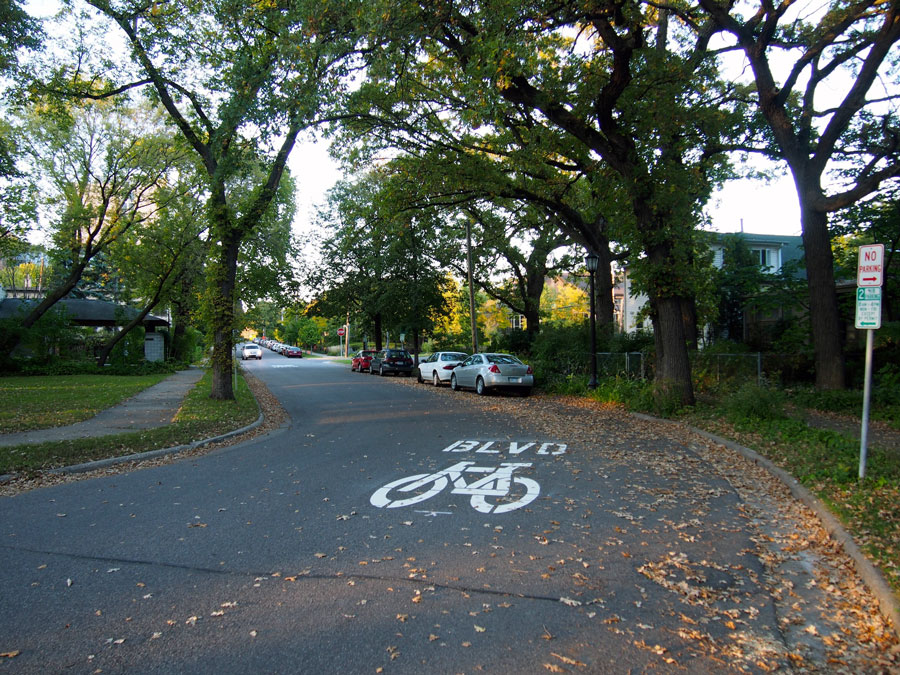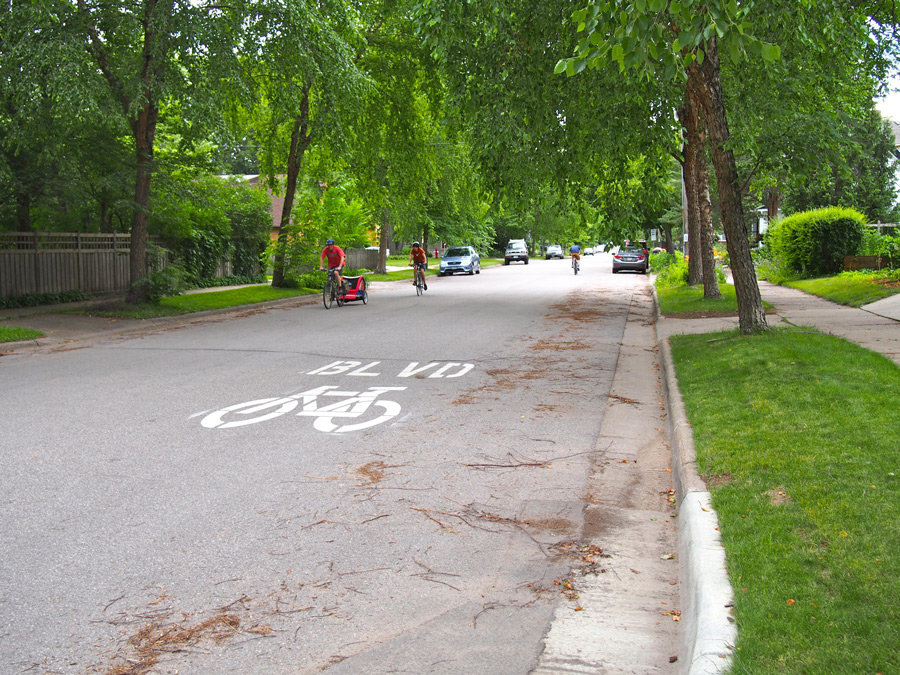Strategy 3 Prioritize a network of neighborhood greenways during the buildout of the All Ages and Abilities Network.
The actions within this strategy are divided into two categories:
Action we will DOActions we will SUPPORTAction we will do are followed by “DO” and are colored in dark gray, and actions we will support are followed by “SUPPORT” and are colored in light gray.
Learn more about how we get thereThe City published a Greenways Study in 2019. The most significant outcome of the Greenways Study was the introduction of the concept of neighborhood greenways, which replaces the term bicycle boulevard that was used in the 2011 Bicycle Master Plan.
Neighborhood greenways are similar to bicycle boulevards, in that they will be installed on low volume residential streets that connect neighborhood destinations and manage motor vehicle volume and speed. Neighborhood greenways differ from bicycle boulevards because they will optimize travel for pedestrians and bicyclists by eliminating or significantly reducing motor vehicle use. Neighborhood greenways will also greatly improve the walking environment throughout the city by limiting interactions with motor vehicles and improving the experience of crossing the street.
Neighborhood greenways will be linear and have logical beginning and end points, typically connecting to other bikeways on the All Ages and Abilities Network as they are installed. Each block will be unique based on the context of the neighborhood, technical analysis, and community engagement. Some blocks may fully remove motor vehicle access, others may narrow the vehicular travel space by half, and other blocks could primarily focus on intersection treatments such as curb extensions, median refuge islands, and traffic circles. Neighborhood greenways can be installed with a street reconstruction or as an independent project, which could install a concrete barrier to provide space for the bikeway. All greenways will be designed and built to accommodate emergency vehicles. Neighborhood greenways may also be used for flooding and stormwater management mitigation.
Actions to prioritize a network of neighborhood greenways during the buildout of the All Ages and Abilities Network.
Bicycling 3.1
3.1. Implement neighborhood greenways. In addition to building new greenways, this program should include improvements to 10 miles of existing neighborhood greenways (21 miles existing).
Supported goals:
Climate Safety Equity Mobility
Related actions:
Difficulty:
High
Timeframe:
2024-2027 (Years 4-7)
Bicycling 3.2
Include greening and stormwater infrastructure elements, public art and public realm improvements as standard in all greenway projects.
Supported goals:
Climate Safety Equity Mobility
Related actions:
Difficulty:
High
Timeframe:
2024-2027 (Years 4-7)
See also actions:
- Bicycling action 8.2
Medians and intersection improvements - Bicycling action 8.3
Greening and stormwater infrastructure

